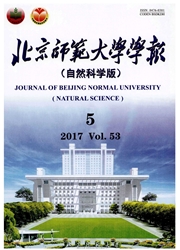

 中文摘要:
中文摘要:
利用9株具有不同进化背景的大肠杆菌构成5个短期可竞争共存的祖先配对,在限制氮、磷资源的环境下,对5个进化组下6个重复家系进行了约1 100世代的选择实验,考察了这些细菌在进化前后菌体氮、磷质量分数w的变化,并评估了这些性状的趋异程度.研究发现:后代细菌w(氮)的变动范围在13.1%~14.2%,而w(磷)为1.70%~1.95%;不同进化组内,细菌氮、磷含量改变的模式不同;同域后代细菌的趋异模式也并不相同.推测细菌进化本身可能会产生许多独特的性状,连同生态相互作用一起,增加了结果的复杂性,需要在更精细的水平上寻找产生这种结果的原因.
 英文摘要:
英文摘要:
Observations on many animal taxa in nature suggest that sympatric species show greater divergence in resource utilization traits.This character divergence was thought to be the most possible consequence of selection driven by resource competition.Recently,however,some theoretical studies indicate that competition for essential resources would lead to character convergence.A few experimental studies employing microbial model systems were designed to examine the influence of resource competition on diversification,but the focus was on substitute resources in short term.In this study,we paired nine Escherichia coli strains with different evolutionary history into five selection groups,wherein two certain strains could co-exist ecologically in each group.Sympatric evolution was initiated in six replicate lines for each ancestral pair under a chemically defined environment which was both nitrogen and phosphorus limited.For all the ancestral and derivative strains,nitrogen and phosphorus contents were measured and their evolutionary divergence was assessed after evolution of 1 100 generations.Nitrogen content for derived strains ranged from13.1%~14.2%,while their phosphorus content varied from 1.70% ~1.95%.Patterns of both elemental change and evolutionary divergence varied among the five groups.We assumed that evolutionary dynamics of bacteria alone might generate many mutations and shape unique characters;the interaction between ecological and evolutionary dynamics complicated the results.To understand the forces behind these observations,more researches are needed on a much finer scale.
 同期刊论文项目
同期刊论文项目
 同项目期刊论文
同项目期刊论文
 Phages limit the evolution of bacterial antibiotic resistance in experimental microcosms. Evolutiona
Phages limit the evolution of bacterial antibiotic resistance in experimental microcosms. Evolutiona Exposure to phages has little impact on the evolution of bacterial antibiotic resistance on drug con
Exposure to phages has little impact on the evolution of bacterial antibiotic resistance on drug con No Evolutionary Shift in the Mating System of North American Ambrosia artemisiifolia (Asteraceae) Fo
No Evolutionary Shift in the Mating System of North American Ambrosia artemisiifolia (Asteraceae) Fo 期刊信息
期刊信息
